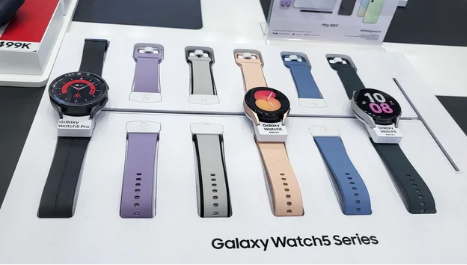Switching between iPhone and Android is more common than ever, but one of the biggest challenges users face is transferring apps and app data. While media files like photos and videos are relatively easy to move, apps and their associated data (such as chat histories, game progress, or saved settings) can be tricky because Apple’s iOS and Google’s Android systems are built differently.
This guide will show you how to share apps and app data between Apple and Android, the tools that can help, and what limitations you should be aware of.
Why Sharing Apps Between iOS and Android is Difficult
- Different ecosystems: iPhone apps are downloaded from the App Store, while Android apps come from the Google Play Store (or Samsung Galaxy Store).
- Different file formats: iOS uses .ipa files for apps, while Android uses .apk or .aab. They are not directly interchangeable.
- App data restrictions: Many apps store user data in a sandboxed environment tied to the OS, making it hard to migrate.
- Licensing differences: Purchases made on iOS don’t always transfer to Android, and vice versa.
Despite these challenges, there are still several ways to move apps—or at least app data—when switching between devices.
1. Use Official Phone Migration Tools
Apple’s Move to iOS (Android → iPhone)
- Install Move to iOS on your Android device.
- During iPhone setup, choose “Move Data from Android”.
- You can transfer contacts, messages, photos, videos, and some app data (but not actual apps).
Samsung Smart Switch (iPhone → Samsung)
- Download Smart Switch on your Samsung device.
- Connect your iPhone with a cable or Wi-Fi.
- Transfer contacts, photos, messages, and in some cases, app-specific data.
✅ Pros: Secure, reliable, and built by Apple/Samsung.
❌ Cons: Does not transfer all apps or all in-app data.
2. Download Apps Separately on the New Device
Because iOS and Android apps are tied to their own stores, you’ll usually need to re-download apps manually on your new device.
- On Android: Search the app on Google Play Store.
- On iPhone: Search on the App Store.
Some apps (like Spotify, Netflix, Gmail, WhatsApp) are available on both platforms, so your account login will restore most of your preferences.
✅ Pros: Simple and ensures the latest version of the app.
❌ Cons: Does not automatically transfer data unless synced with an account.
3. Transfer App Data via Cloud Sync
Many apps save your data in the cloud linked to your account.
- Games: Often linked to Google Play Games or Apple Game Center, but some support cross-platform accounts (e.g., Clash of Clans, PUBG, Fortnite).
- Messaging apps: Apps like Telegram, Signal, Facebook Messenger sync chats automatically across platforms.
- Streaming apps: Netflix, Spotify, and YouTube carry data tied to your login.
✅ Pros: Easiest way to restore data seamlessly.
❌ Cons: Not all apps support cross-platform syncing.
4. Transferring WhatsApp Data (Special Case)
WhatsApp is one of the most common apps users want to move between iPhone and Android.
- iPhone → Samsung/Android: Samsung Smart Switch and WhatsApp’s built-in transfer tool allow you to move chat history, photos, and media.
- Android → iPhone: Use Move to iOS to migrate WhatsApp data.
✅ Pros: Full chat history transfer is now possible.
❌ Cons: Requires updated WhatsApp versions and sometimes a cable connection.
5. Use Third-Party Transfer Tools
Several third-party apps can help transfer apps and app data between iPhone and Android:
- MobileTrans (Wondershare) – Transfers contacts, WhatsApp data, photos, and more.
- iCareFone (Tenorshare) – Specializes in WhatsApp and app data migration.
- AnyTrans (iMobie) – Comprehensive phone migration solution.
✅ Pros: Can move more app data than official tools.
❌ Cons: Some features require paid versions.
6. Manual Export and Import (Limited Use)
For certain apps, you can manually export data and re-import it on the other device:
- Note-taking apps (Evernote, Notion, Google Keep) – Export notes or log into your account.
- Calendars and Contacts – Export as VCF or ICS files, then import on the new device.
- File-based apps – Save files to Google Drive, Dropbox, or OneDrive, then open them on the other device.
✅ Pros: Works without special software.
❌ Cons: Time-consuming, not possible for every app.
7. What You Cannot Transfer
- Paid app licenses – Purchases on the App Store don’t transfer to Google Play, and vice versa.
- System apps – Pre-installed apps like iMessage, FaceTime, or Samsung-exclusive apps cannot move to the other platform.
- All app data – Some apps (especially games tied only to Game Center or Google Play Games) cannot transfer progress across platforms.
Best Practices for Smooth App Transfer
- Log into apps with your account – This is the most reliable way to restore data.
- Use cloud backup – Always back up to iCloud or Google before switching.
- Check app compatibility – Ensure the apps you need are available on the other platform.
- Plan for alternatives – If an app isn’t cross-platform, look for Android/iOS alternatives.
Final Thoughts
Sharing apps directly between iPhone and Android is not possible because of system restrictions. However, sharing app data is very doable with the right approach.
- Use Move to iOS or Smart Switch for partial migration.
- Re-download apps on the new device and log into your accounts to restore data.
- For chat apps like WhatsApp, use official transfer tools.
- Rely on cloud storage and third-party transfer apps for extra flexibility.
Switching phones doesn’t have to mean losing everything. With the right preparation, you can carry over most of your important app data—even between iOS and Android.
Also Read :
